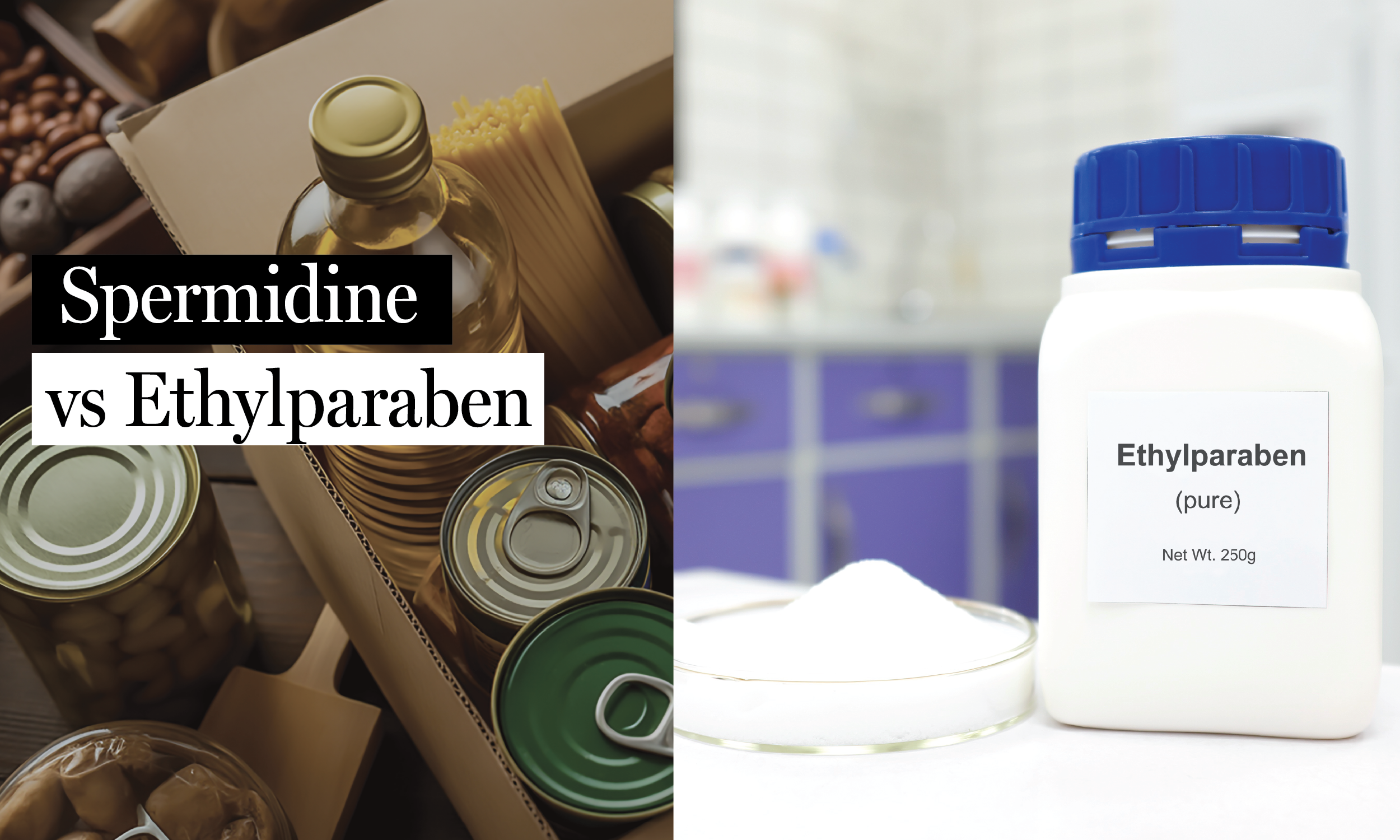
Every day, we’re exposed to countless synthetic chemicals, from preservatives in food to additives in cosmetics and pharmaceuticals, often without realizing their hidden effects. One of the most common is ethylparaben, a preservative now shown to disrupt embryonic development, raising concerns for reproductive health. But here’s the hopeful twist: new research in Ecotoxicology and Environmental Safety reveals that spermidine, a naturally occurring polyamine, may serve as a powerful shield protecting embryos from ethylparaben’s toxic effects.
Ethylparaben: a hidden risk to reproductive health
Ethylparaben (EtP) is a preservative widely used in everyday products, from cosmetics to food to pharmaceuticals, because it helps extend shelf life. As a food additive, it is classified under the E number E214. Its sodium salt, sodium ethyl para-hydroxybenzoate, is used in the same way and is assigned E215. While EtP is generally considered safe at low concentrations, growing evidence shows it may pose significant risks. It acts as an endocrine disruptor, meaning it interferes with the body’s hormonal signaling system that governs growth, metabolism, reproduction, and development. Disrupting this finely tuned network can have profound health consequences. A recent study revealed that EtP can halt embryonic development at the critical 2-cell stage (the point just after fertilization when the embryo has divided once into two cells). Behind this arrest is a cascade of biological damage: increased oxidative stress, malfunctioning mitochondria, DNA instability, and impaired transcription. Even histone modifications (master regulators of gene expression) were thrown off balance, derailing zygotic genome activation (ZGA), the essential process that hands developmental control from maternal to embryonic genes. Together, these findings raise red flags not only for adult reproductive health but also for the earliest stages of life, suggesting EtP exposure could directly endanger developing embryos.
Ethylparaben: how much are we exposed to and is it dangerous?
Human exposure to EtP is widespread. It has been detected in water systems, cosmetics, food, and even in maternal urine and amniotic fluid, showing that developing embryos can be exposed in utero. Environmental concentrations of EtP (0.001–120 μM) overlap with the doses tested in the study, where the highest concentration (40 μM) caused complete developmental arrest. While this concentration is within this range, it represents a high-end exposure scenario that may not reflect typical human exposure levels. However, chronic exposure to lower concentrations of EtP over time could still pose risks, especially for vulnerable populations like pregnant women. This highlights the importance of understanding the cumulative effects of EtP exposure in humans, even at lower concentrations.
Spermidine: a natural shield to ethylparaben for embryos
Spermidine, a polyamine found in all living organisms, is celebrated for promoting autophagy and combating oxidative stress, key reasons it is recognized as a longevity supplement. By supporting cellular self-renewal, neutralizing free radicals, restoring mitochondrial function, and preventing apoptosis, spermidine helps protect cells under stress.
In this study, fertilized embryos from female mice whose hormones were stimulated to induce ovulation were exposed to varying concentrations of EtP (1–40 μM), with separate groups receiving melatonin or spermidine as potential protective agents. Embryonic development was tracked from the 2-cell stage to blastocyst (a tiny cluster of about 100 cells, a few days after fertilization), allowing researchers to evaluate both EtP’s harmful effects and the protective potential of the supplements. Spermidine supplementation dramatically improved embryo health and development: blastocyst formation rebounded, oxidative stress declined, mitochondrial function recovered, and apoptosis was reduced, outperforming melatonin and highlighting its superior protective power.

Melatonin and spermidine protect mouse embryos from ethylparaben-induced developmental arrest.
Fertilized embryos were cultured in control medium (Ctrl), with ethylparaben (EtP), EtP + melatonin (MT), or EtP + spermidine (SPD). Development was tracked through key preimplantation stages: 2-cell (2C), 4-cell (4C), 8-cell (8C), morula, and blastocyst. EtP exposure caused arrest at the 2C stage, while spermidine largely rescued development to later stages, including blastocyst; melatonin provided partial protection. Stages are defined as: 2C, two cells; 4C/8C, subsequent cleavages; morula, 16–32 cells; blastocyst, hollow structure with trophoblast and inner cell mass. Wang et al.
How spermidine protects embryonic development
The study revealed that spermidine supplementation partially reversed the damage caused by EtP through several mechanisms:
- Reduction of oxidative stress: spermidine neutralized reactive oxygen species (ROS), which are elevated in EtP-treated embryos and contribute to DNA damage and mitochondrial dysfunction.
- Mitochondrial restoration: spermidine improved mitochondrial membrane potential and ATP production, essential for energy generation during early embryonic development.
- Apoptosis prevention: spermidine reduced early apoptosis markers, helping maintain cellular integrity in embryos.
- Transcriptional recovery: spermidine partially restored transcriptional activity, which is critical for zygotic genome activation (ZGA) and normal embryonic progression.
Spermidine: shielding future generations from everyday toxins
Our world is full of synthetic chemicals, many of which we still don’t completely understand, and ethylparaben may be quietly putting embryonic development at risk. The good news is that spermidine offers a hopeful solution. It helps counteract oxidative stress, restore mitochondrial function, and support essential developmental processes, giving embryos a better chance to withstand environmental toxins like ethylparaben. These findings suggest that spermidine could be a natural ally for reproductive health, highlighting the importance of protective strategies alongside efforts to reduce chemical exposure. As research continues to uncover the effects of these widespread compounds, spermidine may prove to be a practical way to help safeguard future generations.







